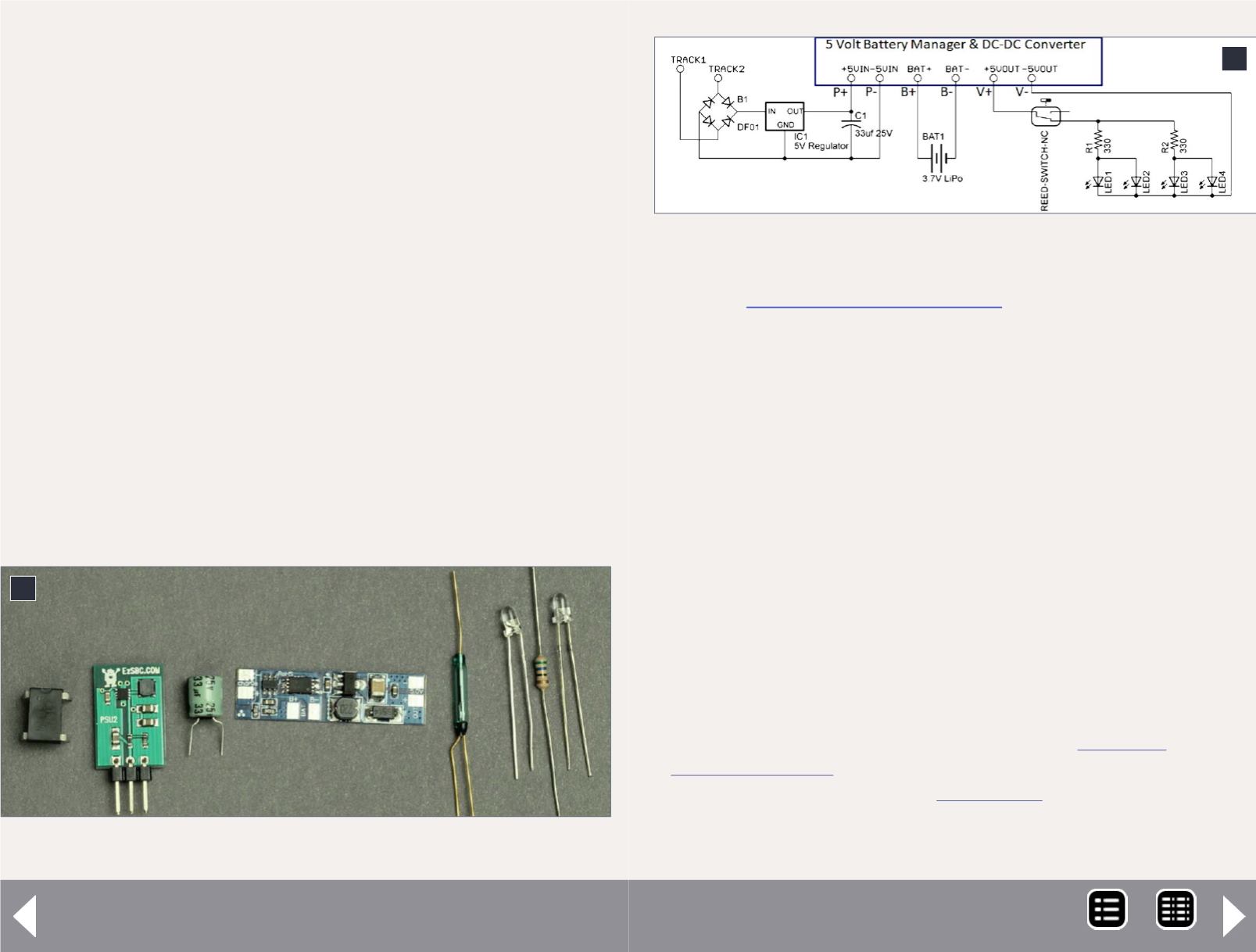
amp mobile power source whose battery is recharged when-
ever it finds 6-25 volts on the rails, in any form, DC or DCC,
even AC! It will recharge and protect the LiPo battery simulta-
neously. Later, we’ll look at another variation.
Not everyone may be familiar with LiPo batteries, but they
are actually quite common. They power many cell phones and
tablets. They are light in weight compared to many other bat-
tery types. LiPo batteries have very high energy density. That
is, they pack a great deal of electrochemical power in a very
small volume. As such, if shorted out they can generate a great
deal of heat in a short time, and can even explode and catch
fire. Therefore, protection circuitry is essential for safe use.
Damaged LiPo batteries should not be used, and should be
disposed of properly and safely. When fully discharged for dis-
posal they are not a toxic hazard. Over-charging and over-dis-
charging damages a LiPo battery.
All these concerns for charging and use are handled by a small,
low-cost ($3.99) battery manager board. This board is available
4
4. Basic power block components.
Battery-powered models - 3
via eBay
as “Lithium battery
charging 5V step up, protection all-in-one PCB.” I use a 240
MAH battery because it is small and fits many of my models,
but larger single-cell LiPos will work too, if they meet the physi-
cal space requirements. You should note the rating pictured on
each battery of 20C or 30C. This is the maximum charging rate
specified for the specific battery. This would refer to 30 times
240 milliamps or 7.2 amps max charging rate. Or 20 times 250
milliamps or 5 amps max charging rate. These charging rates
should never be exceeded, to prevent damage to the battery.
Some LiPo batteries come with a small battery manager circuit
board embedded in the battery package, but many, particularly
the small LiPos, do not have them.
The first battery manager board I used expects 5 volts input
to the board. We will use track power (DC or DCC) for board
power. First, we convert track power to DC with a full wave
bridge rectifier, and then regulate it to 5 volts. The bridge
rectifier is a 1.5 amp DF01 bridge rectifier from
The first attempt used a 5 volt, 1 amp
LM2940CT-5.0/NOPB-ND from
similar to a com-
mon LM7805. But the peak current draw (charging a very low
battery) was close to 900 milliamps, and the regulator ran quite
5
5. Basic power block schematic.
MRH-Nov 2014


